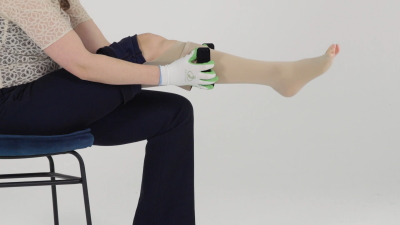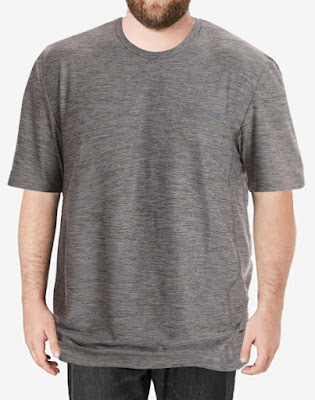Essential Tips for Wearing Compression Socks: Maximize Comfort!
For optimal comfort and efficacy, choose the right size of compression socks and wear them properly. Ensure that you put them on first thing in the morning and remove wrinkles for better results.
Compression socks are essential for those needing to improve circulation, reduce swelling, or enhance recovery after physical activities. Wearing them properly can maximize their benefits. Many athletes, travelers, pregnant women, and individuals with specific medical conditions find compression socks incredibly beneficial.
To leverage their full potential, it's crucial to focus on fit and application. Selecting the appropriate compression level and material is key for comfort and function. Moreover, understanding the right technique to don and doff these socks can greatly influence their therapeutic effectiveness. A well-rounded approach to incorporating compression socks into your daily routine will ensure you get the most out of this beneficial garment.

Credit: www.stockingaid.com
The Basics Of Compression Socks
Compression socks slip onto your feet with a promise. They vow to increase circulation, reduce swelling, and support the leg's journey through everyday tasks. Their snug fit gently squeezes your lower limbs. This helps blood move back up to your heart. Welcome to the world of compression wear, where comfort pairs with health benefits.
Purpose And Benefits
Every pair of compression socks serves a simple mission: to apply consistent pressure to your ankles and legs. This concept has been a game-changer for a variety of individuals, from athletes to nurses, and anyone longing for relief from varicose veins.
- Boosts circulation — helping weary legs feel lighter
- Reduces swelling — giving comfort throughout the day
- Prevents varicose veins — keeping legs smoother and healthy
- Supports post-surgical recovery — aiding in quicker rehabilitation
- Enhances sports performance — through improved blood flow
Varieties And Styles
Compression socks strut into the limelight, donning a spectrum of colors and patterns. This isn't a one-size-fits-all scene; options abound to suit your style and needs.
| Level of Compression | Common Uses |
|---|---|
| Mild Compression | Travel, everyday wear |
| Medium Compression | Exercise, mild swelling |
| Firm Compression | Medical conditions, post-surgery |
Selecting the right compression level is crucial. Mild compression works best for the everyday user. Medium compression is ideal for those with mild swelling or athletes. Firm compression targets serious medical conditions. Seek advice from a healthcare provider to find your perfect match.
Choosing The Right Fit
For optimal comfort and effectiveness, finding the right fit in compression socks is critical. Wearing a poorly fitting pair can lead to discomfort and negate the very benefits you seek. Let's dive into how you can choose the perfect fit for your needs.
Size Selection Guidelines
Finding the perfect size is more than just picking a small, medium, or large. Compression socks come in a range of sizes to provide the best support for your legs. Use these guidelines:
- Check the sizing chart: Every brand has its own sizing chart. Compare your measurements against it.
- Consider the level of compression: Compression levels are measured in mmHg. Your healthcare provider can recommend the right level.
- Fit over fashion: Choose a size based on fit, not just style. The effectiveness of compression socks depends on a correct fit.
Measuring Your Legs
Accurate measurements ensure your compression socks work effectively. Follow these steps to measure your legs:
- Measure in the morning: Your legs are least swollen when you wake up.
- Circumference is key. Measure the widest part of your ankle, the widest part of your calf, and your calf length.
| Measurement | Procedure |
|---|---|
| Ankle | Wrap a tape measure around the narrowest part of your ankle, just above the bone. |
| Calf | Measure the widest part of your calf. |
| Length | From the floor to the bend in your knee. |
Write down your measurements and keep them handy when selecting your socks. Ensure the fabric stretches evenly across your leg for a snug, wrinkle-free fit.
When To Wear Them
Compression socks aren't just for long flights or hospital stays. Daily routines and specific activities can benefit from their snug embrace, too. Knowing when to slip them on can enhance comfort and health. Let's explore the best scenarios for strapping into these supportive garments.
Best Times For Use
Wearing compression socks at strategic times boosts their benefits. Let's look at a few:
- Travel: Perfect for long journeys, they prevent swelling and clots.
- Work: Stand or sit all day? Socks keep circulation in check.
- Exercise: Wear during workouts for muscle support and post-exercise recovery.
- Post-Surgery: Speed up your comeback by reducing swelling and promoting blood flow.
- Pregnancy: Alleviate leg discomfort and swelling common in expectant mothers.
Activities Suited For Compression Socks
The right activity with compression socks can make all the difference. Ideal uses include:
| Activity | Benefit |
|---|---|
| Running | Reduces soreness, improves endurance. |
| Gym Sessions | Stabilizes muscles, minimizes fatigue. |
| Hiking | Supports ankles, prevents swelling. |
| Nursing | Maintains circulation during shifts. |
| Flight Travel | Avoids clots and leg pains on long flights. |
Remember, daily wear can also bring lasting benefits – keep those legs happy!
Steps To Putting Them On
Embracing the advantages of compression socks starts with mastering the steps to putting them on. Whether for sports, travel, or medical reasons, the correct donning method ensures comfort and effectiveness. Follow these techniques to wield your compression gear like a pro.
Proper Technique
Getting compression socks on requires a bit more effort than regular socks, but it's easy once you know how:
- Start with dry skin – Moist skin can make the socks stick and harder to pull on.
- Turn the sock inside-out – Except for the toe area.
- Slip your foot in – Guide your foot carefully into the toe area.
- Pull the heel up – Secure the heel portion in place over your heel.
- Gently roll the sock up – Gradually unfold the sock up your leg, smoothing out wrinkles as you go.
- Ensure even distribution – The fabric should be evenly distributed with no bunching.
Tools To Help
Special tools can make slipping into your compression gear a breeze. Explore these aids:
- Donning gloves – Improve grip and protect the fabric from fingernails.
- Donning frames – Frames hold the sock open, so you just have to step in.
- Slip-on aids – Special slippery materials help the sock glide over your foot.
Managing Comfort Throughout The Day
Wearing compression socks isn't just about slipping them on in the morning and forgetting they exist. For optimal comfort and effectiveness, it's crucial to practice proper techniques throughout your day. This section offers practical advice for maintaining comfort from sunrise to sunset.
Adjusting As Needed
Your body changes as the day goes on. This means your compression socks might need a little tweak to stay snug and comfy. Take a moment every few hours to:
- Check the fit—ensure they haven't bunched or slid down.
- Smooth out wrinkles for consistent pressure and to prevent skin irritation.
- Realign the socks so the heel and toe are in the proper place.
Proper adjustment avoids discomfort and keeps your circulation in check.
Dealing With Heat And Sweat
Compression socks are great, but they can get warm. Here's how to handle sweat and heat:
| Tip | Benefit |
|---|---|
| Choose breathable materials | Maintain coolness and reduce sweat buildup. |
| Apply talcum powder | Minimize moisture and friction on your skin. |
| Wear moisture-wicking shoes | Keep feet dry and comfortable for hours. |
Staying cool and managing sweat ensures you can enjoy the benefits of compression without discomfort.
Credit: vimvigr.com
Caring For Your Compression Socks
Caring for your compression socks is crucial to ensure they continue to provide the optimal level of support and last as long as possible. Proper maintenance keeps them stretchy and effective. Follow these guidelines to make your socks work well for you.
Washing Recommendations
To keep your compression socks in prime condition, gentle washing is paramount.
- Turn them inside out before washing.
- Use cold water and a mild detergent.
- Avoid bleach and fabric softeners as they break down fibers.
- Hand washing is best. If machine washing, select a delicate cycle.
- Lay them flat or hang them to dry. Do not use high heat.
Durability And Replacement
Regular assessment of your compression socks ensures they remain supportive.
| Check For | Action Needed |
|---|---|
| Stretchiness | If less snug, consider replacing. |
| Wear and Tear | Look for holes or thinning areas. |
| Elasticity | Ensure they still compress effectively. |
Replace them every 3-6 months depending on use and care. Wearing worn-out compression socks can be ineffective and may even cause issues.
Common Mistakes To Avoid
Wearing compression socks can offer many benefits, from improving circulation to reducing swelling. But to get the most out of them, it's important to avoid common mistakes.
Incorrect Sizing
Choosing the right size for your compression socks is crucial. The wrong size can lead to discomfort or even reduce the socks' effectiveness. Here are some tips to ensure a perfect fit:
- Measure your legs early in the morning when swelling is minimal.
- Use a measuring tape for accuracy.
- Refer to the brand's sizing chart before you buy.
- Remember, socks should feel snug but not painfully tight.
Improper Use
Compression socks work best when used correctly. Misusing them can do more harm than good. Avoid these common slip-ups:
- Wear them at the right time; most benefit from wearing during the day.
- Put them on properly; roll up slowly and smoothly.
- Don't wear them to bed unless your doctor recommends it.
- Keep them smooth against your skin; avoid wrinkles and bunches.
Combining Comfort With Style
Embracing the fusion of comfort and style with compression socks is easier than some might think. These socks are not just for medical purposes. They blend health benefits with fashion trends seamlessly. Functional fashion is the key to merging these two worlds. Modern compression socks offer a variety of styles without compromising on their primary purpose. Let's dive into how you can make compression socks a stylish addition to any wardrobe.
Html Fashionable Choices
The array of fashionable compression socks available today is impressive. You can choose from:
- Bright patterns that stand out
- Sleek solids for a more professional look
- Fun prints that showcase personality
- Subtle nudes for invisible comfort
Html Coordination With Clothing
To coordinate compression socks with clothing:
- Match colors with shoes or accessories for a cohesive look
- Pair bold socks with neutral outfits for a pop of color or pattern
- Choose nude or black tones for professional settings
- Consider the season and occasion while selecting the sock length and style
Combining fashion with the health benefits of compression wear doesn't have to be a challenge. With these tips, anyone can rock their compression socks with confidence and flair.
Medical Considerations And Advice
Wearing compression socks can offer many health benefits. But it's vital to know the medical aspects. Let's explore how to wear them safely.
Consulting Healthcare Professionals
Before trying compression socks, talk to a doctor. Especially for those with health conditions. A professional gives the best advice on:
- The right pressure level
- Sock length needed
- Duration for wearing socks
Recognizing Side Effects
Sometimes, compression socks cause issues. Look out for:
| Side Effect | Action to Take |
|---|---|
| Redness or irritation | Stop use, consult a doctor |
| Numbness or tingling | Remove socks, seek medical advice |
| Skin indentations | Check fit, consider different size |
If side effects persist, contact a healthcare provider immediately.

Credit: www.amazon.com
Real-life Success Stories
Discover inspiring journeys and the life-changing effects of compression socks. Real people share their experiences. They tell us how these snug-fitting, pressure-applying garments have transformed their daily lives.
Testimonials
Read heartfelt stories from folks just like you who struggled with leg discomfort.
"My legs felt less tired after long shifts," says Jane, a nurse.
"No more swollen ankles on flights," reports Mark, a frequent traveler.
Transformations
Witness amazing transformations. They'll make you want to try compression socks.
- Edith found relief from varicose veins.
- John improved his marathon times.
Benefits
The benefits of compression socks are notable. Listed below are key advantages from real users:
| User | Benefit |
|---|---|
| Lisa | Reduced leg swelling |
| Tom | Enhanced blood circulation |
| Alice | Less pain during pregnancy |
Frequently Asked Questions For Essential Tips For Wearing Compression Socks: What You Need To Know
What Do I Need To Know About Wearing Compression Socks?
Choose the right size for your feet to ensure effective compression. Wear them as instructed, ideally during the daytime. Remove socks before sleeping. Replace them every 3-6 months or when they lose elasticity. Consult a healthcare provider for personalized advice on wearing compression socks.
What Are The Tips For Compression Stockings?
Choose the correct size for proper fit. Gently roll them on; avoid pulling. Wash stockings daily to maintain elasticity. Replace them every three to six months. Consult with a healthcare professional for personalized advice.
What Not To Do With Compression Socks?
Don't wear compression socks if they're damaged or bunching. Avoid wearing them for prolonged periods without breaks. Don't ignore discomfort or skin changes while wearing them. Also, never share your compression socks with others. Always follow your healthcare provider's instructions for use and care.
Is There A Trick To Putting On Compression Socks?
Putting on compression socks is easier when you follow these steps: turn the sock inside out to the heel, slip your foot in, and then gently roll the sock up your leg without stretching. Use rubber gloves for extra grip if needed.
Conclusion
Embracing the benefits of compression socks can truly elevate your well-being. It's about comfort, health, and performance. Remember to choose the right fit, wear them properly, and maintain them with care. Step into your day with confidence, knowing you're supporting your legs in the best way possible.
Your journey to optimized circulation and reduced fatigue starts with these essential tips.






No comments